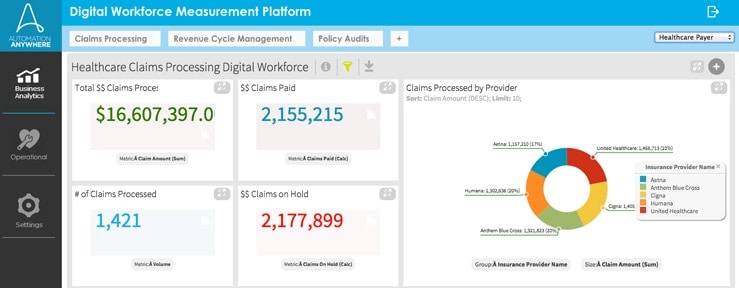- Login
- Search
- Contact Us
-
Have a question? Our team is here to help guide you on your automation journey.
-
Explore support plans designed to match your business requirements.
-
How can we help you?
-
- Products
Featured
Automate any process, anywhere Streamline complex, mission-critical workflows with the Agentic Process Automation System. Explore the Platform Explore the Platform
- AI System
- Power smarter decisions
Drive context-aware automation with the Process Reasoning Engine.
- Build AI Agents
Automate advanced tasks with AI Agent Studio.
- Streamline workflows
Rapidly design and deploy with Automator AI.
- Process complex documents
Extract and organize data with Document Automation.
- Discover opportunities
Identify inefficiencies with Process Discovery.
- Power smarter decisions
- Automation System
- Orchestrate automations
Centralize initiatives with Automation Workspace.
- Govern programs
Establish frameworks and oversight with CoE Manager.
- Automate from any app
Get AI-powered assistance with Automation Co-Pilot.
- Speed workflows with cloud
Power instant data exchange with serverless Automation Anywhere Cloud Service
- Unify systems
Connect applications and workflows with seamless integrations.
- Orchestrate automations
- View all Products
-
- Solutions
Featured Agentic Solutions
Accounts Payable Invoice automation—No setup. No code. Just results. Learn More
Customer Onboarding Scale KYC/AML workflows. Learn More
Customer Support Keep queues moving, even at peak load. Learn More
Healthcare RCM Revenue cycle management that runs itself. Learn More
- Resources
Get Community Edition: Start automating instantly with FREE access to full-featured automation with Cloud Community Edition.
Featured
 Named a 2025 Gartner® Magic Quadrant™ Leader for RPA.Recognized as a Leader for the Seventh Year in a Row Download report Download report
Named a 2025 Gartner® Magic Quadrant™ Leader for RPA.Recognized as a Leader for the Seventh Year in a Row Download report Download report- Become an Expert
- Developer Tools
- Get Support
- View all resources
-
- Partners
Find an Automation Anywhere Partner Explore our global network of trusted partners to support your Automation journey Find a Partner Find a Partner
- Find a Partner
- For Partners
-

When you have a smart Digital Workforce made up of bots that can capture and measure business data flowing through them, you can quickly become overwhelmed with all the information hitting you in real time. How can you make that influx of information actionable, easy to consume, and easy to act upon?
If you have an enterprise Robotic Process Automation (RPA) solution that features a robust analytics foundation, you can institute a simple three-step framework (measure, act, improve) wherein all data being recorded can be acted on to enhance business benefits and return on investment (ROI).
Let’s take a look at how this framework helps in the context of a healthcare payer.
What are we measuring?
For this example, lets take three crucial metrics related to insurance claims processing:
- Average cost per claim: How much is paid out on each claim to a customer?
Why it’s important: Analyzes average cost per claim by policy type to help drive proper policy pricing - Average time to settle a claim: How long does it take on average to process and settle insurance claims?
Why it’s important: Claim settlement time impacts customer satisfaction - Claims ratio: Compares number of claims over a period of time, with the premium earned during that period
Why it’s important: Helps detects fraud for high claim volumes or customer satisfaction issues for low claim volumes

How do we make this actionable?
The bots can be set up to deliver feedback on data produced in the interest of escalating action and properly directing resources to solve specific issues. Three examples of how information might be separated are:
- Good to know: All numbers are “green” and within their thresholds. <No action required>
- Seems interesting: The number seems better than expected and intrigues me to drill down further. <Invites a drill-down or ad hoc analysis action>
- Have to act upon it: Numbers are “red” and outside their thresholds. <Action needed immediately>
What are the business benefits of acting on this information?
Benefits of the above action framework can fall under three common buckets:
- Reduce cost of operations
- Increase throughput and process efficiency
- Increase business and sales volumes

The above framework can be applied to every RPA implementation across any business vertical (finance, insurance, healthcare, transportation, etc.) and helps make each such implementation very data-driven. The ROI derived from such implementations can then be quantified, which in turn can justify further expansion of the automation charter across more business groups within the enterprise.
The more you measure, the more you gain.
Start your
automation journey.
About Jay Bala
Get to know the Agentic Process Automation System.

For Students & Developers
Start automating instantly with FREE access to full-featured automation with Cloud Community Edition.


